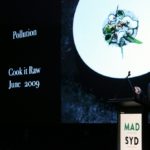… but bad sons
PART 2
Meanwhile, however, what is an act of entanglement in one direction might be an act of disentanglement in another. For one thing, the gradual transition to adulthood involves a simultaneous distancing manoeuvre away from family and natal norms as the household becomes less of a totalising institution in a young adult’s life. For a sufficiently large anisotropy, the thing in question can be strongly socially valued and yet be assigned ‘negative value’ (cf. Munn, 1986) by others – those who stand to have their sense of community and solidarity disrupted by the activities with which that thing is associated.
The virtual path from gum to urinal or pint glass, for example, deviates from shared ideas about the normative ‘right’ trajectory for moistened nicotine pouches. As a moral statement, it is an almost exact negative photo-copy of the positively valued mutualism and social levelling that take hold when snus is gifted for oral use. Service workers are impelled to intimacy with ‘polluting’ substances by having to reach in and remove the pouches – such that maintenance work is ‘dirtied’ as the friendly smile of the *snuser* (‘snus user’) is ‘stained’. Snus tins usually have a small compartment for storing used pouches, but the concealment of illicit drugs often takes priority over the moral obligation to abstain from littering – or the societal duty to be honest with licensed security. Then again, entering a nightclub under the ‘wrong’ pretences provides the necessary cover for gifting under the ‘right’ pretences in one of the toilet stalls later on. In sum, a thing can mediate various kinds of value depending on whether it enforces a particular social group’s convictions about what life ought to be like, or, alternatively, whether it negates that life. Such a ‘unity of morality and immorality’ is evinced by actions that have both positive and negative valence to different people.
Contributed by AdrianSjøvold on 08/02/2023






